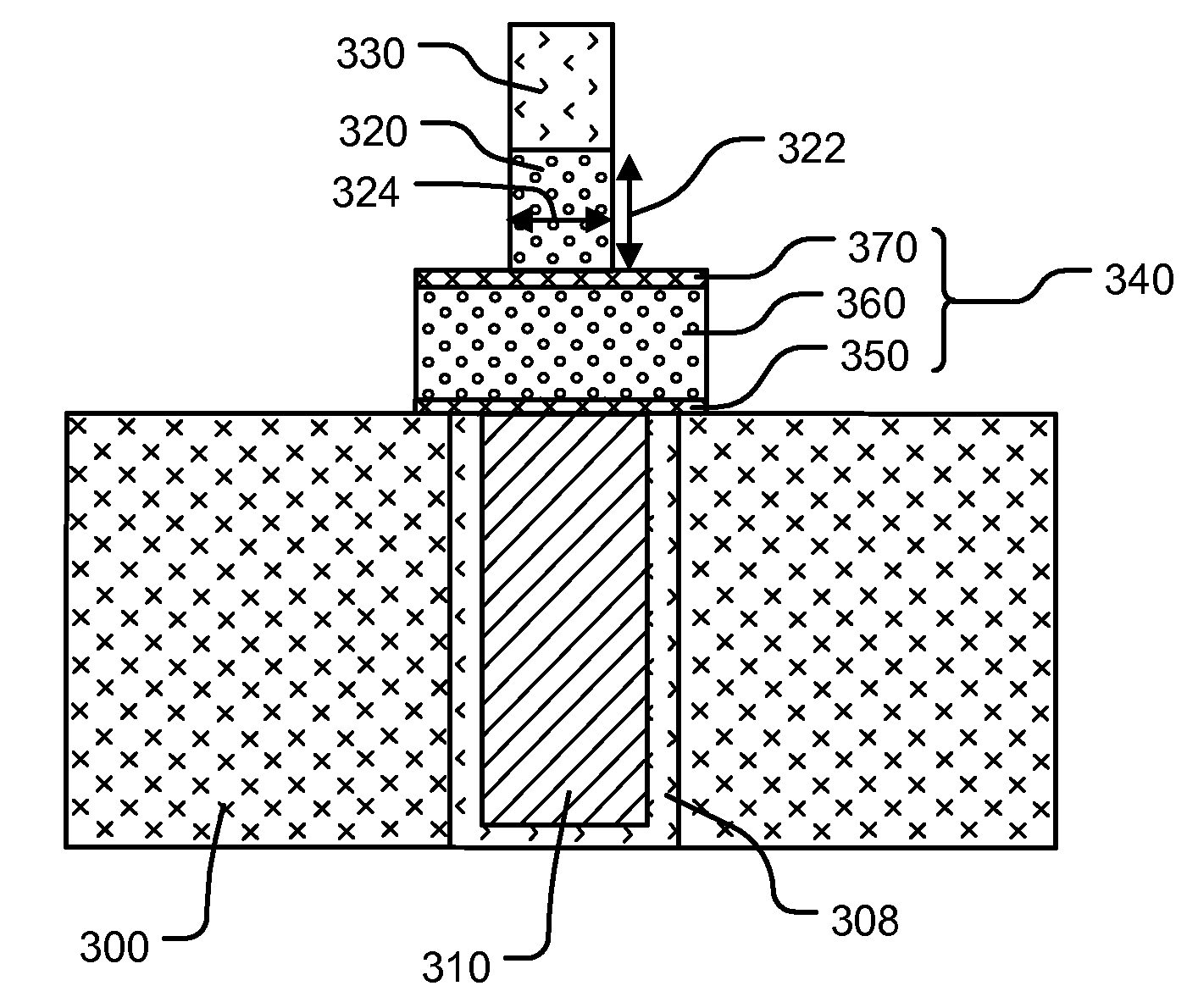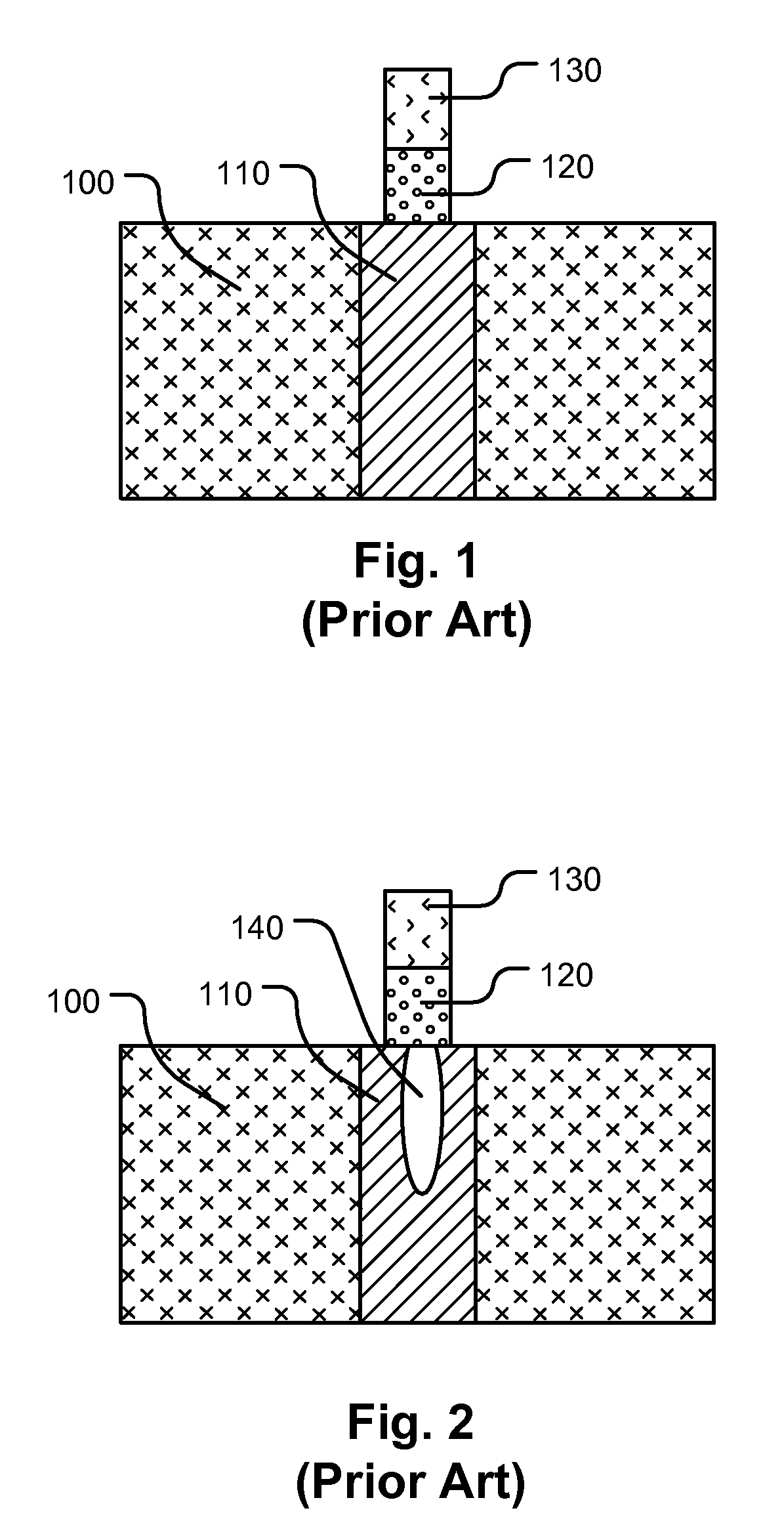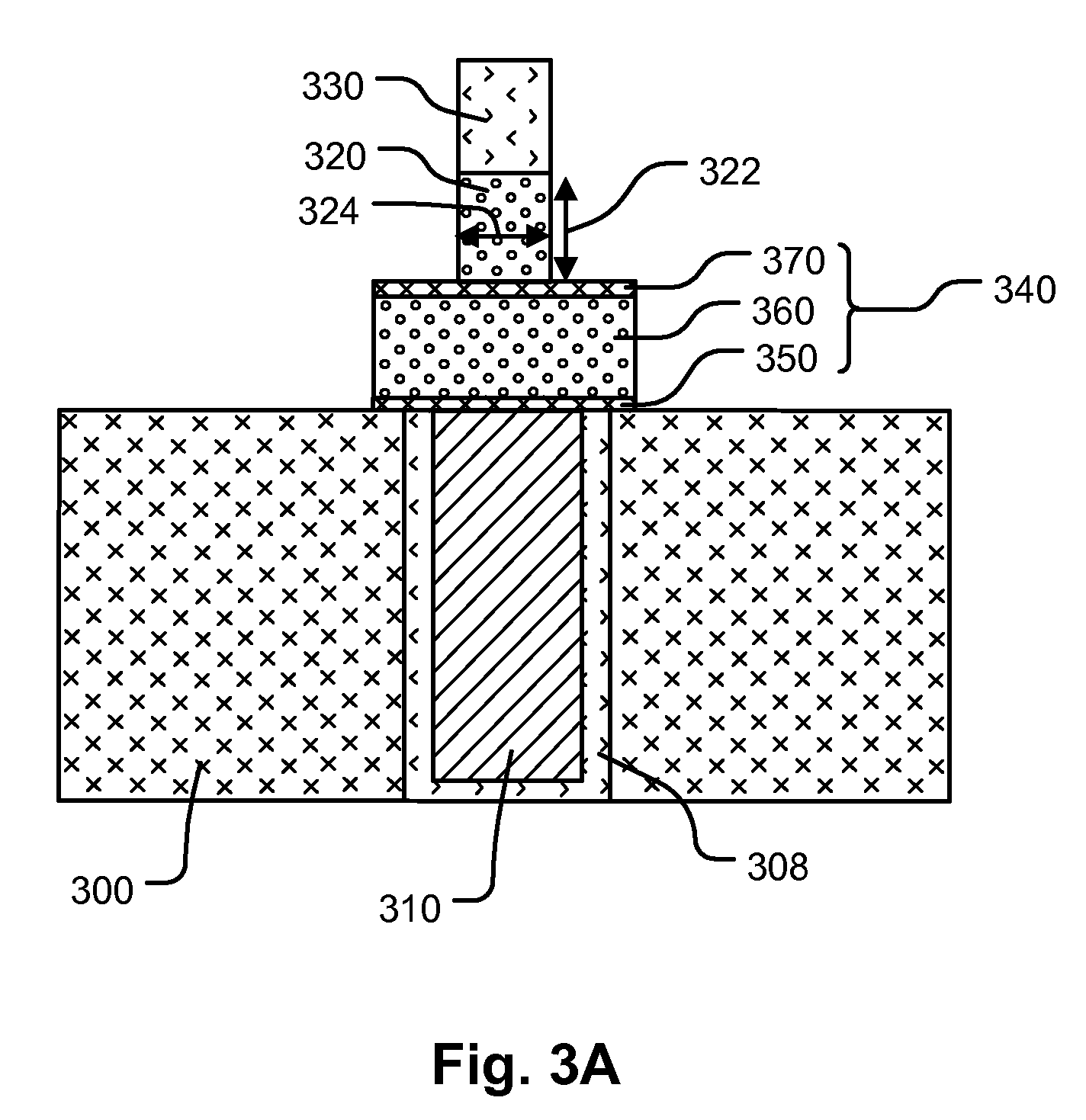Phase change memory cell including a thermal protect bottom electrode and manufacturing methods
- Summary
- Abstract
- Description
- Claims
- Application Information
AI Technical Summary
Benefits of technology
Problems solved by technology
Method used
Image
Examples
first embodiment
[0058]FIGS. 6-12 illustrate an embodiment of a process flow for manufacturing a memory cell in accordance with a The following description does not repeat certain explanations regarding materials, thicknesses, and the like, as set out above.
[0059]FIG. 6 illustrates a cross-sectional view of a first step in a process flow comprising providing an inter-layer dielectric 300 having a bottom electrode (contact) 310 extending therethrough.
[0060]Next, a multi-layer structure is formed on the structure illustrated in FIG. 6 comprising sequentially forming a layer of first barrier material 750, a layer of thermal protect material 760, a layer of second barrier material 770, a layer of phase change material 720, a layer of top electrode material 730, and a layer of hard mask material 700, resulting in the structure illustrated in FIG. 7. The hard mask material 700 in some embodiments comprises SiN, SiO2, or SiON.
[0061]Next, a pillar 800 comprising photoresist material is formed on the struct...
second embodiment
[0066]FIGS. 13-20 illustrate an embodiment of a process flow for manufacturing a memory cell in accordance with a
[0067]FIG. 13 illustrates a cross-sectional view of a process flow comprising providing an inter-layer dielectric 500 having a bottom electrode 510 extending therethrough.
[0068]Next, a portion of the bottom electrode 510 illustrated in FIG. 13 is etched to form a recess 1400, resulting in the structure illustrated in FIG. 14.
[0069]Next, a conformal layer a first barrier material 1500 is formed on the structure illustrated in FIG. 14, resulting in the structure illustrated in FIG. 15. The first barrier material 1500 within the recess defines an opening 1510 within the recess 1400.
[0070]A layer of thermal protect material is formed on the structure illustrated in FIG. 15 and then a planarizing process such as Chemical Mechanical Polishing CMP is performed, resulting in the structure illustrated in FIG. 15 having a first barrier layer 550 and a thermal protect layer 560 form...
PUM
| Property | Measurement | Unit |
|---|---|---|
| Fraction | aaaaa | aaaaa |
| Fraction | aaaaa | aaaaa |
| Electrical conductivity | aaaaa | aaaaa |
Abstract
Description
Claims
Application Information
 Login to View More
Login to View More - R&D
- Intellectual Property
- Life Sciences
- Materials
- Tech Scout
- Unparalleled Data Quality
- Higher Quality Content
- 60% Fewer Hallucinations
Browse by: Latest US Patents, China's latest patents, Technical Efficacy Thesaurus, Application Domain, Technology Topic, Popular Technical Reports.
© 2025 PatSnap. All rights reserved.Legal|Privacy policy|Modern Slavery Act Transparency Statement|Sitemap|About US| Contact US: help@patsnap.com



